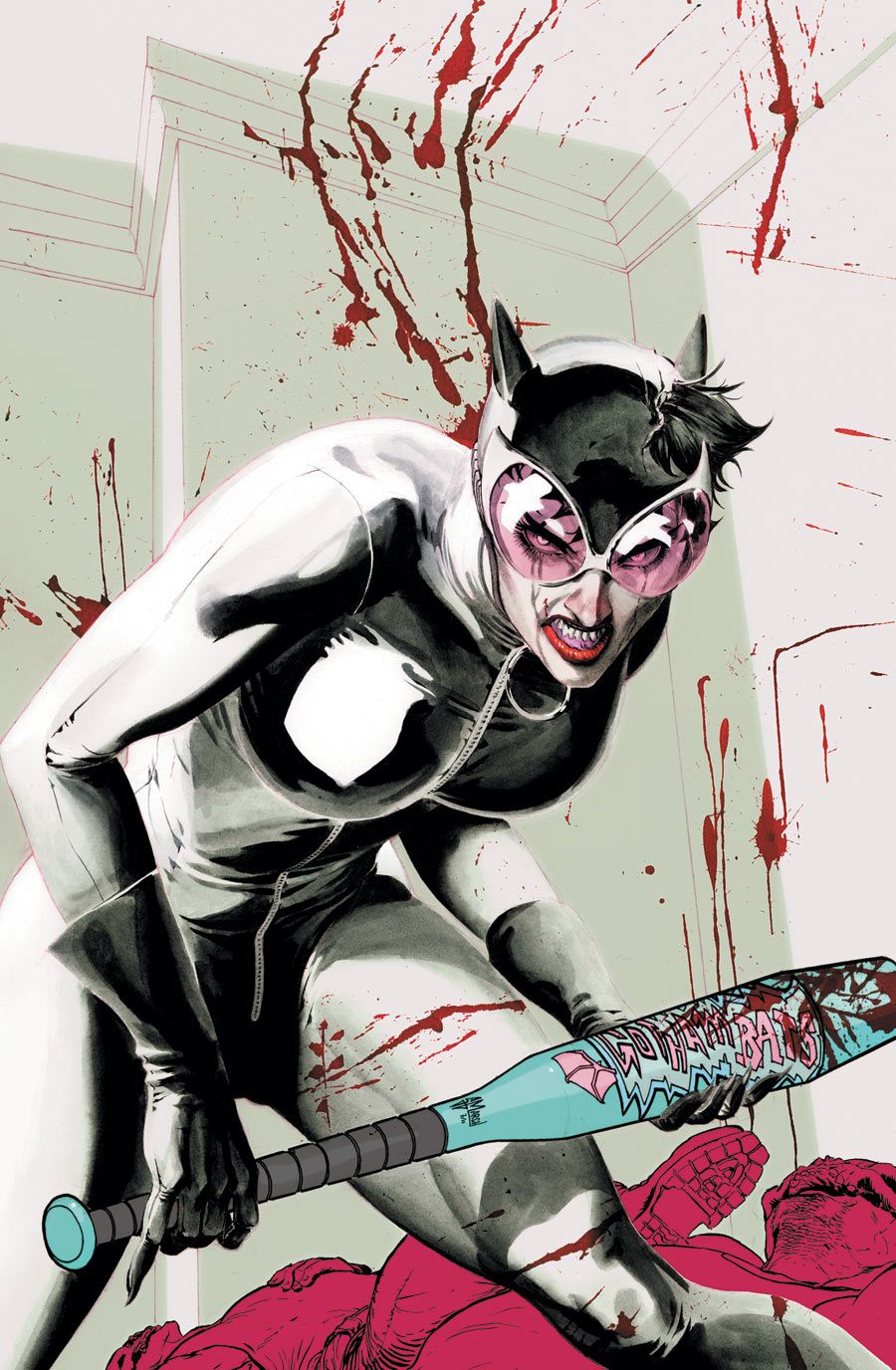If there's one thing I know about superheroes, it's that you're not really a hero (or even an anti-hero) if you haven't experienced some sort of personal tragedy, namely the death of someone close to you, preferably with you at fault. It's not enough to want to make the world a better place or want to use your abilities in a positive manner; death is the key to heroics. In "Catwoman" #3, Selina Kyle becomes a full-fledged DC Comics super(anti-)hero with the death of her fence Lola MacIntire. It's a mechanical, empty death that serves to give Selina a 'tragedy' and a means for her to act 'empowered' through vengeance.
The issue begins with Selina tied to a chair, captured by a midlevel gangster named Bone who has beaten Lola MacIntire to death to obtain information both on Selina and the items she stole from him. From there, the issue follows a rather predictable trajectory: Selina escapes, beats up some henchmen, goes after Bone, wants to kill him but is stopped, and there's probably some moral lesson about revenge, killing, or something like that in there that you've heard a thousand times before.
It's not a matter of death being a bad thing, or even that the death of women in comics is somehow something that should never happen, it's that this issue seems like it's following a formula designed to accomplish something -- and it's a worn out formula by this point. Both Lola and Bone exist to serve their purpose and nothing more, which makes the intended purpose of telling a meaningful story of growth and empowerment for the protagonist ultimately fail. When the roles are so determined, the actors are not characters but plot elements, and the end result so obvious it's a matter of going through the motions.
Within that formula, Judd Winick presents a version of Catwoman that doesn't seem familiar. When she attacks Bone, her biggest frustration is that he killed Lola over "meaningless stupid things," and, yet, her entire existence in predicated upon the desire of mere 'things.' If this is meant to suggest a drastic change to the character, that doesn't come through here, nor does it seem like a smart move. But, if Selina returns to stealing 'meaningless stupid things,' what was the point of her tirade beyond showing the character to be a hypocrite and coward at the same moment you're supposedly attempting to show her as an empowered figure?
Guillem March's art is a mixture of restraint and excess that makes the hackneyed writing easier to swallow. The way he draws Selina's face, both happy and angry, with cat-like features is a visually distinct approach. It's a little overdone in the aftermath of Lola's death, but that the visual look carries over to scenes where she's not in shock/pissed off helps put that overdone visual in a context that lessens the overblown nature.
It seems that the only way for stories to 'mean' anything or for heroes to gain 'meaning' is for a death to happen. Well, here it is, and it's an empty, calculated death that carries no emotional weight whatsoever. You'd think we would be done with pointless, obvious deaths of secondary characters that exist only to die, but I guess we're not.

